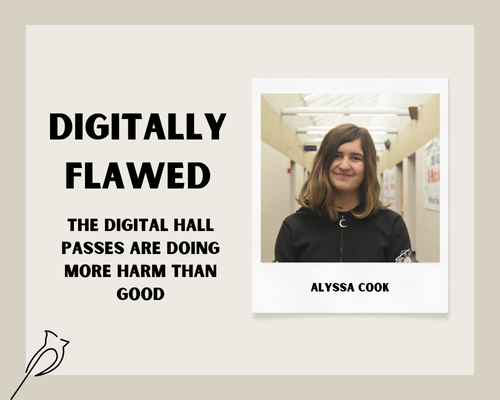Although this system was recently abandoned, some teachers at the beginning of the year were asked to try out a new digital hall pass system called Minga.
But, due to how the website works, how would staff stop students from taking advantage of it, and how would it even work, considering that it’s digital?
With Minga, students have to create a hall pass every time they need to go out into the hall during class. To get a hall pass, a student must create an account, go to “Create Hall Pass,” select where they’d like to go, click the drop-down menu to pick the teacher that has supposedly approved the pass and then finally create the pass. After that, the teacher gets a notification about the pass.
That’s it. The student now has full control of creating a pass at any time saying that a teacher approved it. Teachers, however, can close the passes created by students, but what stops students from just creating a new one after it was closed by a teacher or after the five-minute timer is done?
Also, with the implementation of the new phone law restricting students’ access to their phones throughout the school day, students wouldn’t be able to show proof of their pass to staff. Not only that, but if there were an exception to the rule for these passes, the unreliable Wi-Fi connection would also prevent students from proving they have a pass to be out of class.
If there isn’t an exception for phones when using these passes, students would have to carry their chromebooks to the bathroom. This poses a few problems. There’s no space in any of the bathrooms for students to set their Chromebooks; even if there were, that would run the risk of them being stolen.
There are so many technicalities and loopholes with this unreliable system that it could end up turning into a way for students to cut class without punishment.



